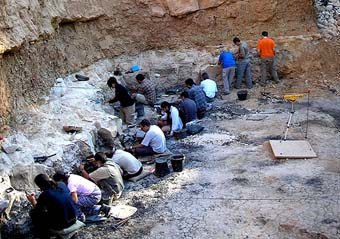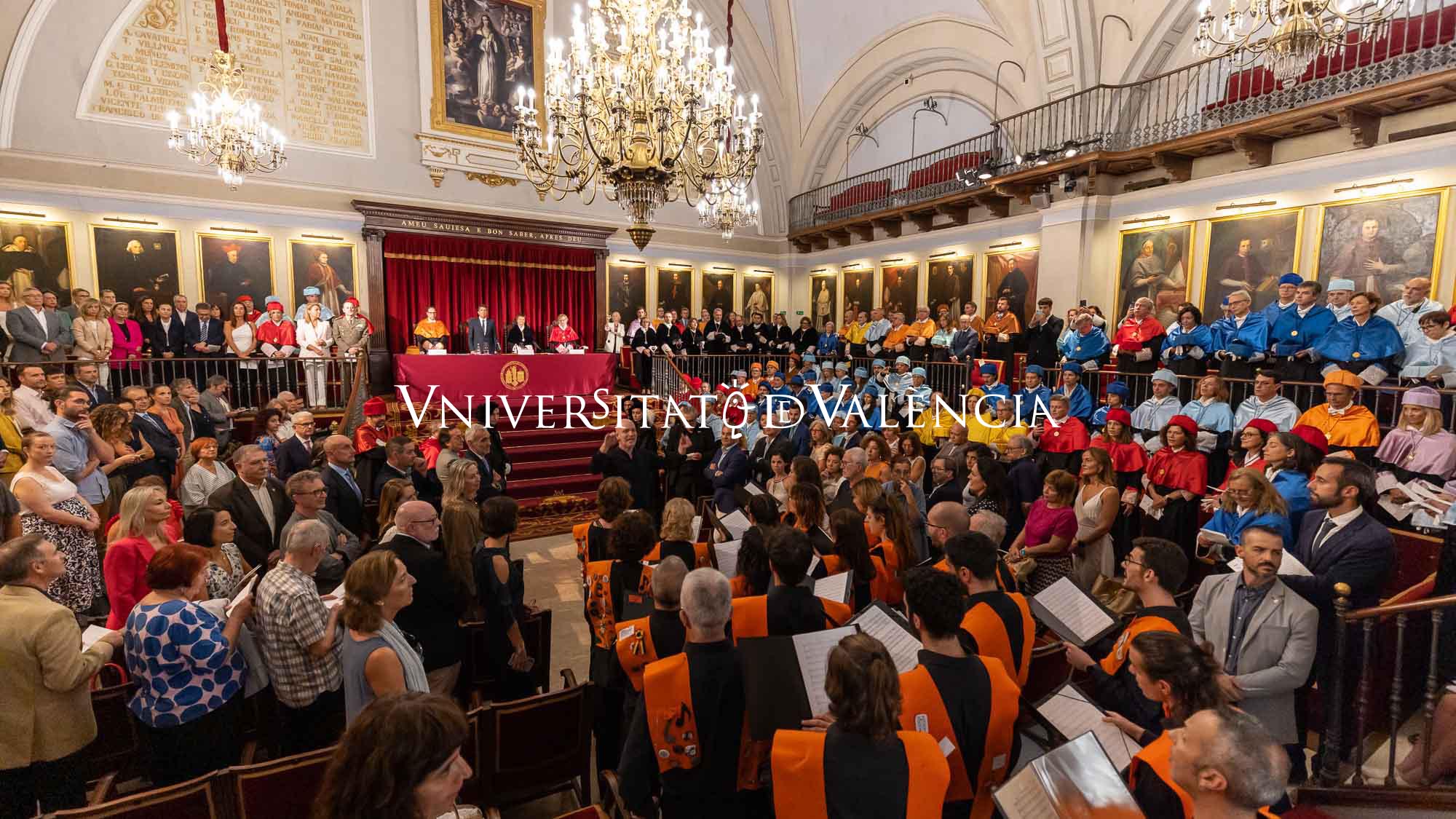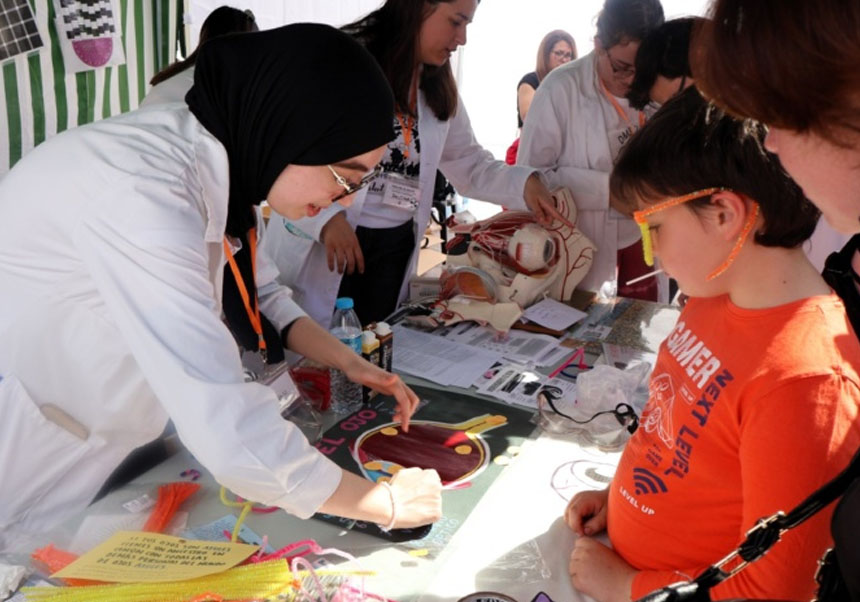
Researchers of the Universitat de València, Valencian Museum of Natural History and the Complutense University of Madrid have discovered two new species of bat, apart from another third specie which is the most ancient African well-known record in the Peninsula. The discovery, in the Venta del Moro site, has been carried out thanks to the study of isolated teeth and it has been published in the scientific journal ‘Historical Biology’.
New species are named Rhinolophus antonioi and Pipistrellus rouresi. The first one belongs to the genre that gather greater horseshoe bats (Rhinolophus spp), whereas the second one is linked to the current common bat, or small pipistrelle bat (Pipistrellus pipistrellus).
Furthermore, it has been identified Myotis podlesicensis which is an African specie linked to the Geoffroy’s bat (Myotis emarginatus) and is the most ancient well-known record of an African bat. The discovery of the last specie joins the African ones in the set, such as hippopotamus or crocodiles. This fact proves a faunal exchange period Africa-Europe occurred at the end of Miocene, 6 million years ago.
The discovery has been carried out by a palaeontology team composed of Vicente D. Crespo, Francisco J. Ruiz-Sánchez y Plini Montoya, from the Department of Botany and Geology of the Universitat de València; Samuel Mansino, from the Valencian Museum of Natural History; and Paloma Sevilla, from the Complutense University of Madrid. The fossils remains located are preserved in the Geology Museum of the Universitat of Valencia (MGUV).
Apart from the species of bat, other species have been recovered in the paleontological site in Venta del Moro, famous since 70’s of the last century. Species such as saber tooth tigers, hyenas, monkeys, giant camels, hippopotamus, elephants, antelopes, horses and crocodiles. These animals are put in the current African savannah context, and have more than 6 million years. They came from the second middle of the Miocene period, especially in the “Age of the Mammals” called Ventiense, term coined because of the name of the town Venta del Moro, where the deposits of that age are better exemplified.
6 million years ago, the atmosphere of Venta del Moro would correspond to a meadow with wooded areas near a lake that would cover a great part of the current town.
To obtain the fossil remains of small mammals, it was carried out an arduous washing and shifting procedure of several tones of sediments, followed by the grading of the remains obtained in order to recover the fossil teeth. Finally, the study of these models was performed by electron microscopy techniques. The new species of bats have been named Rhinolophus antonioi and Pipistrellus rouresi, dedicated to Antonio Crespo Bellés, and Maria Isabel Roures Roures, respectively.
Research Group
This work has been carried out by members of GI-PVC (Paleontological Research Institution in Cenozoic Vertebrates) of the Universitat de València, which is especialised in the study of the vertebrates fossils of the Cuencas Béticas, Iberian Mountains and in general, of the Region of Valencia and East of the Iberian Peninsula, apart from the fauna in the Tertiary and Quaternary period of Educador. The group studies the remains from different lines of Palaeontology (Taphonomy, Systematic, Biostratigraphy, Biogeography, Paleoecology, Study of the shape, etc.) and even, makes use of GIS tools (Geographic Information System) in the paleoclimatic and palaeoenvironmental reconstruction.
Presentation of the results
The area of the site of Venta del Moro, in the spot known as Puente la vía, is managed by the public company ADIF (Administrator of Railway Infrastructures) which depends on the Ministry of Public Works and Transport and in the context of authorised excavations funded by the Valencian Department for Culture of the Valencian Government. The research project is supported by the Valencian Department of Business, University and Science of the Valencian Government, the Ministry of Economy (MINECO), European Regional Development Funds and the Secretariat for Higher Education, Science, Technology and Innovation of Ecuador.
The results of the study were presented in the 1st International Meeting of Early-stage Researchers in Palaeontology-XIV Meeting of Young Researchers in Palaeontology, held recently in Alpuente (Valencia) and organised by the Universitat de València or Bristol University (England).
Article:
Vicente D. Crespo, Paloma Sevilla, Samuel Mansino, Plinio Montoya & Francisco Javier Ruiz-Sánchez: Bats from the classical site of Venta del Moro (Late Miocene, Eastern Spain). Historical Biology, published online: 12 Jan 2017
Doi: http://dx.doi.org/10.1080/08912963.2016.1277995
Last update: 21 de february de 2017 09:15.
News release


















